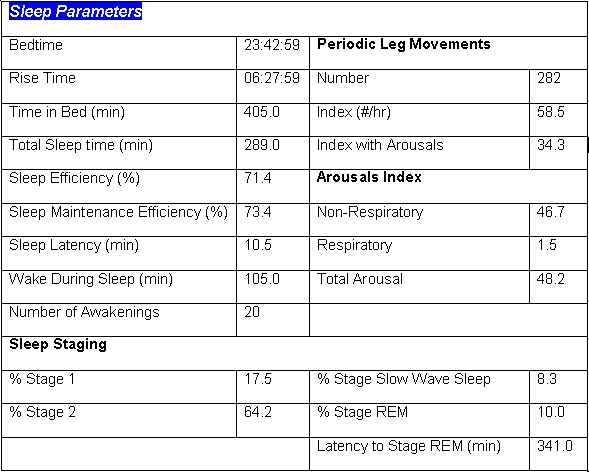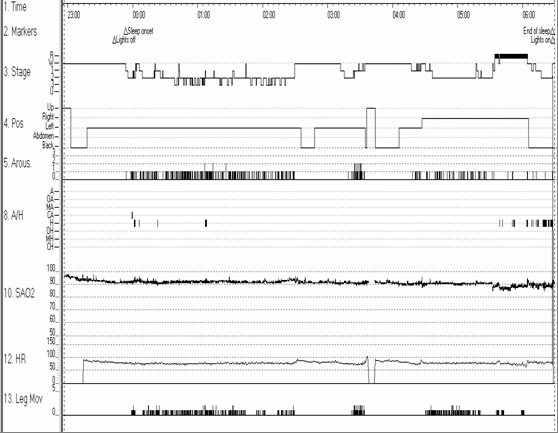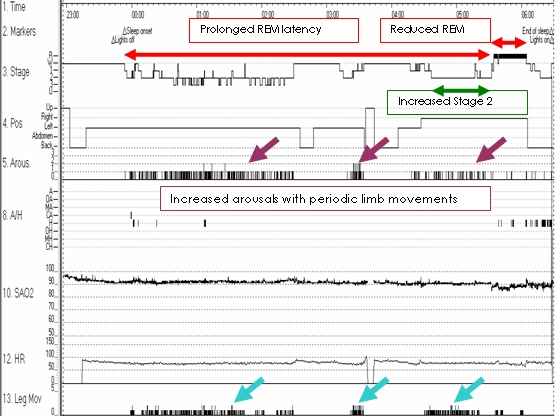Contributed by Prudhvi Karumanchi, MD, Abdul Hamid Alraiyes, MD, and Reena Mehra, MD MS, Department of Medicine; Division of Pulmonary, Critical Care and Sleep Medicine; Case Western Reserve University
A 52-year old African American male with history of hypertension, Crohn’s disease, stroke, depression and multiple back surgeries presents for an assessment of sleep apnea to the sleep laboratory for an overnight sleep study. The hypnogram is shown below.
What are the most significant findings noted in the sleep architecture and limb movements?
What medication combination is this patient taking which may have caused these findings?
A. amitriptyline and lorazepam
B. caffeine and paroxetine
C. bupropion and lorazepam
D. melatonin and sertraline
Answer:
1) There is prolonged REM latency with reduced REM sleep, increased stage 2 and increased arousals with periodic limb movements.
2) A. Amitriptyline and lorazepam
This hypnogram illustrates prolonged rapid eve movement (REM) latency of 341 minutes and decreased REM sleep (10%) with only one REM period before final awakening in the morning (red arrows). The sleep architecture also shows increased stage 2 sleep (64.2%) (green arrow). Although this patient was diagnosed with mild obstructive sleep apnea with an apnea-hypopnea index of 5 events/h, arousals (purple arrows) were predominantly non-respiratory related, and occurred secondary to the periodic limb movements (turquoise arrows) noted in the hypnogram.
Patients who are taking anti-depressants such as tricyclic antidepressants or selective serotonin reuptake inhibitors may have reduced REM sleep and a prolonged REM latency[1]. This patient was noted to have increased stage 2 sleep and decreased slow wave sleep which may be observed in the setting of benzodiazepine medication use [2,3]. This patient was also noted to have a significant number of arousals secondary to periodic limb movements which may be noted in patients with restless legs syndrome[4]. A potential secondary etiology of restless legs syndrome includes use of tricyclic antidepressants or selective serotonin reuptake inhibitors.
References
- Wilson, S. and S. Argyropoulos, Antidepressants and sleep: a qualitative review of the literature. Drugs, 2005. 65(7): p. 927-47.
- Erman, M., et al., Comparative efficacy of zolpidem and temazepam in transient insomnia. Hum Psychopharmacol, 2001. 16(2): p. 169-176.
- Roth, T., et al., The effects of flurazepam, lorazepam, and triazolam on sleep and memory. Psychopharmacology (Berl), 1980. 70(3): p. 231-7.
- Karatas, M., Restless legs syndrome and periodic limb movements during sleep: diagnosis and treatment. Neurologist, 2007. 13(5): p. 294-301.







